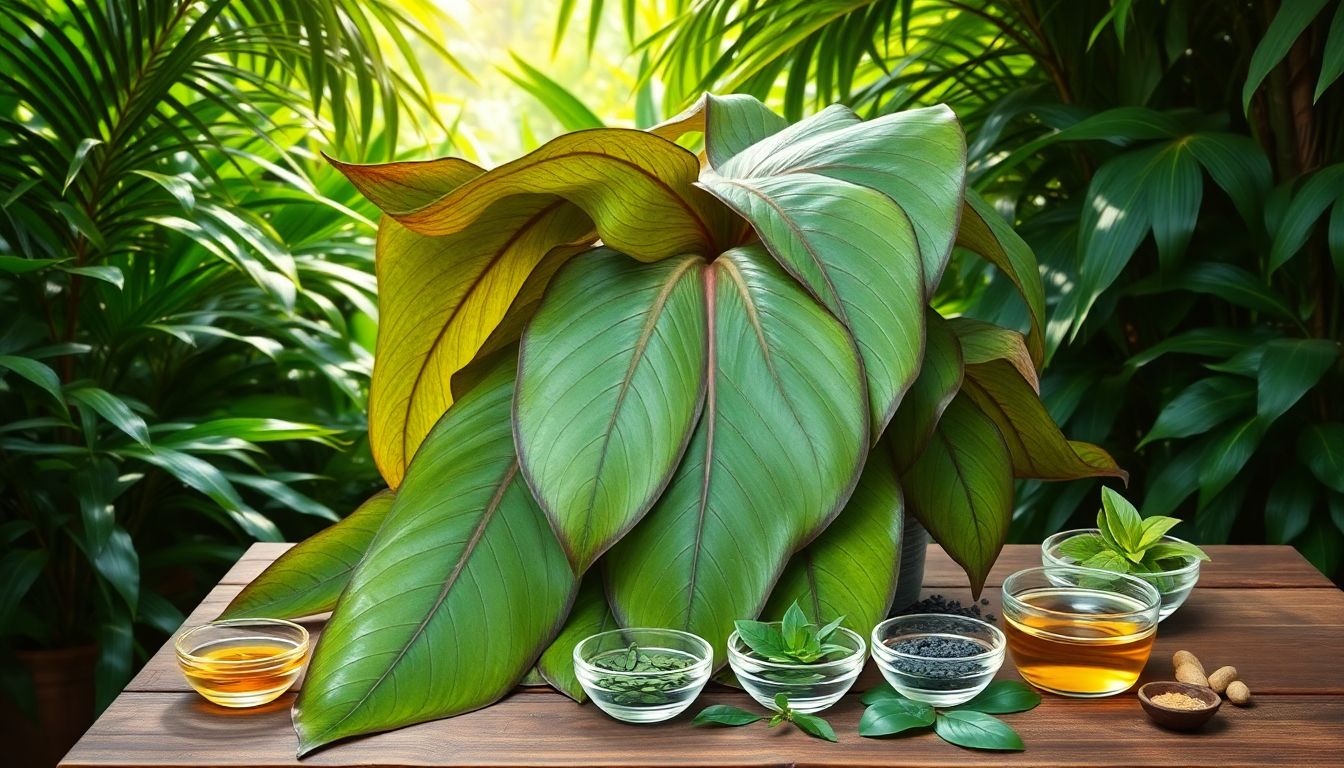Paneer: Uses, Benefits, Side Effects
Discover the versatile uses of paneer, its health benefits, and potential side effects. Learn how to incorporate this nutritious ingredient into your diet.

Patharchatta, also known as Bryophyllum pinnatum, has been a part of traditional medicine for centuries. Many cultures use it to treat common ailments and support overall health. Today, more people are turning to natural remedies, making herbal plants like Patharchatta popular again. It’s important to learn how this plant works before adding it to your health routine. Knowing its benefits, risks, and proper ways to use it can help you stay safe while enjoying its healing powers.
Patharchatta is a succulent plant that belongs to the Crassulaceae family. It’s easy to spot with its thick, green leaves that have small, tooth-like edges. The plant is native to India but is found in many tropical regions worldwide. Traditionally, Indian healers used it to treat wounds, fever, and skin problems. Scientific research shows that Patharchatta contains compounds like flavonoids, alkaloids, and phytosterols. These chemicals give it many medicinal properties, like anti-inflammatory, antioxidant, and healing effects.
For centuries, people have used Patharchatta for various health issues. It’s known for helping with respiratory problems such as coughs, asthma, and bronchitis. The leaves are often crushed and applied on wounds to promote healing. Folk medicine also uses it to control blood sugar levels in diabetics and to reduce fever and inflammation. Its healing properties make it a go-to remedy in many rural communities.
Modern studies support many traditional uses of Patharchatta. Scientific research shows it can help speed up wound healing and improve skin health. Herbal supplements now contain extracts of Patharchatta for immune support and skin regeneration. Some studies also suggest that it may help with breathing issues, providing relief from cough and asthma symptoms. Its potential in modern herbal medicine continues to grow as new research emerges.
Research indicates that Patharchatta helps tissues repair faster. Its leaves contain compounds that stimulate new cell growth. For centuries, traditional healers used crushed leaves on cuts and burns. Since it encourages skin regeneration, many believe it’s an excellent remedy for scars, boils, and minor injuries. Phytochemicals like flavonoids may also add anti-inflammatory benefits, reducing swelling and pain.
If you suffer from coughs or asthma, Patharchatta might help. People have used it for generations to ease breathing problems. Scientific trials show that extracts can relax airways and reduce inflammation. To use it safely, herbal teas or herbal supplements are common options. Always remember to check with your doctor before trying herbal remedies for respiratory issues.
Some studies suggest Patharchatta can help lower blood sugar levels. Traditional medicine often used it for diabetes management. Modern research backs up its potential to improve glucose metabolism. Combining it with standard treatments might help control blood sugar better. But, just like with any herbal supplement, consult your healthcare provider before use.
Patharchatta contains natural antioxidants that fight against harmful free radicals in the body. This can reduce inflammation and protect cells from damage. Its anti-inflammatory effects have benefits for chronic conditions like arthritis and skin problems. Incorporating it into your routine might support a healthier, less inflamed body.
While generally safe, some people may experience allergic reactions or skin irritation when using Patharchatta. A few reports mention swelling or redness after applying fresh leaves topically. Overuse or high doses can lead to unwanted side effects. Pregnant women, breastfeeding mothers, and children should be cautious and ask a healthcare provider before use.
Scientific studies show that the plant is safe when used properly. However, overdosing can cause stomach upset or more serious issues. There are rare cases where excess intake led to toxicity symptoms. To stay safe, follow recommended doses and avoid self-medicating with large quantities. Always check with a healthcare professional if unsure.
Patharchatta may interact with prescribed drugs, especially those for blood sugar and blood pressure. It can either enhance or interfere with medicine effects. This is why informing your doctor about any herbal products you use is essential. Combining herbal remedies with medications should be done carefully.
You can enjoy Patharchatta in various ways:
Always follow recommended dosages and prepare it properly. When buying supplements, choose reputable brands to ensure quality and authenticity.
Before starting any herbal treatment, consult a qualified herbalist or healthcare provider. During use, monitor for any side effects or allergic reactions. Combining Patharchatta with other herbal or conventional medicines is safest when done under professional guidance. Remember, natural doesn’t always mean risk-free.
Patharchatta’s traditional and modern uses make it a versatile herb with many health benefits. It supports wound healing, boosts respiratory health, and may help regulate blood sugar. Still, like all medicines, it comes with potential risks if misused. Proper guidance from healthcare professionals ensures you enjoy its benefits safely. Keep exploring this natural remedy’s potential while staying cautious. Scientific validation continues to grow, and future research could unlock even more ways Patharchatta enhances health naturally.
Discover the versatile uses of paneer, its health benefits, and potential side effects. Learn how to incorporate this nutritious ingredient into your diet.
Discover the uses, benefits, and potential side effects of Patharchatta. Learn how this powerful herb can enhance your health and well-being today.
Discover the uses, benefits, and potential side effects of Halim seeds. Learn how these nutritious seeds can enhance your health and well-being today.
Uncover the health benefits and risks of betel nuts with insights from Dr. Smita Barode. Get informed about their uses and side effects now!
Discover the benefits and risks of natural blood thinners. Learn essential precautions to take for safe and effective use in your health regimen.
Explore the numerous health benefits and nutritional aspects of mustard oil. Learn about its uses and side effects to make informed choices for your health.